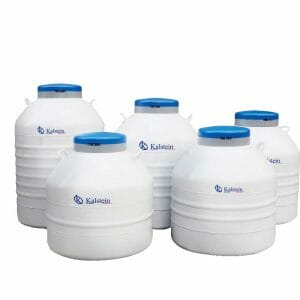Nitrogen gas has many applications in the aerospace industry, which employs the highest and strictest quality controls on all components that are manufactured and their design, and the use of this element is crucial, as it prevents certain undesirable events in aircraft. The benefits of using nitrogen derive from one of the properties of nitrogen: in a wide range of pressure and temperature conditions it behaves like an inert gas. For this reason, nitrogen in the aerospace industry is beneficial when used to:
- Inflation of landing gear tires.
- Hydraulic Suspension.
- Emergency slide inflation.
- Displacement of air in fuel tanks.
- Laser cutting of parts.
How does nitrogen help prevent combustion in key airplane operations?
One way to prevent a flame from forming and sustaining itself is to eliminate the presence of oxygen, as this element maintains the chemical reactions that produce heat in combustion. In airplanes, there are operations that lead to the generation of heat, which, if preventive measures are not taken, can cause a fire, especially when combustible materials such as:
- Rubber.
- Oil.
- Airplane gasoline or its equivalent.
Taking this idea into account, during the landing of the aircraft, intense heat occurs due to the force of rubbing of the landing gear of the aircraft with the runway. Therefore, unlike compressed air (which contains 21% oxygen), nitrogen, due to its inert nature, does not favor combustion if it comes into contact with hot brakes of aircraft, as occurs, for example, in the case of a tire burst.
Another application related to the landing operation of the aircraft is the hydraulic suspension. A hydraulic suspension is a hydraulic device used as a shock absorber in the landing gear of an aircraft, and consists of an oil-filled cylinder and a hollow, perforated piston in which the oil is slowly pushed when a compressive force is applied to the landing gear. In this case, the nitrogen is used together with the oil inside the damper, so that this gas prevents the oil from self-ignition due to the intense heat generated under this high compression.
Nitrogen is also widely used as an inert gas for mixing with fuel tank vapors and for other flammable or explosive compounds. In this case, nitrogen is injected into the tank in the fuel tanks, to move all the air inside. Removing oxygen from the equation decreases the chance of combustion.
What other applications does nitrogen have in the aerospace industry?
Nitrogen is used in inflating emergency slides and rescue boats because of its chemical inertia and explosion-proof properties. The inflation system usually consists of a pressurized cylinder, a regulator valve, two high-pressure hoses, and two suction hoses. The cylinder can have a volume of between 1.6 and 16 cubic decimeters, and is filled with nitrogen or a mixture of nitrogen with carbon dioxide. According to safety regulations established by some government entities, the plane has to be evacuated in 90 seconds using 50% of the emergency exits that are arranged. Therefore, a reliable and fast system for filling the slide and boats is very important.
Nitrogen is also beneficial in cutting parts for high-energy laser aircraft, where an inert atmosphere is required that prevents the formation of oxides or flame on the material. A flow of nitrogen also helps remove excess molten waste material during cutting.
Why use Kalstein’s nitrogen tanks?
Nitrogen availability in aerospace companies is mandatory, as the operation of an aircraft in certain key aspects depends on the use of this gas. Therefore, the manufacturer Kalstein makes available nitrogen tanks that can be reviewed at the link HERE, where it is also possible to consult the price, manage a purchase or request a quote. These tanks are highly reliable, resistant and lightweight as they are made of aluminum; the losses of nitrogen by evaporation are minimal and are available in volumes that can reach up to 20 liters in the liquid form of the element. For any queries or reviews from other teams, please go to the HERE homepage.


